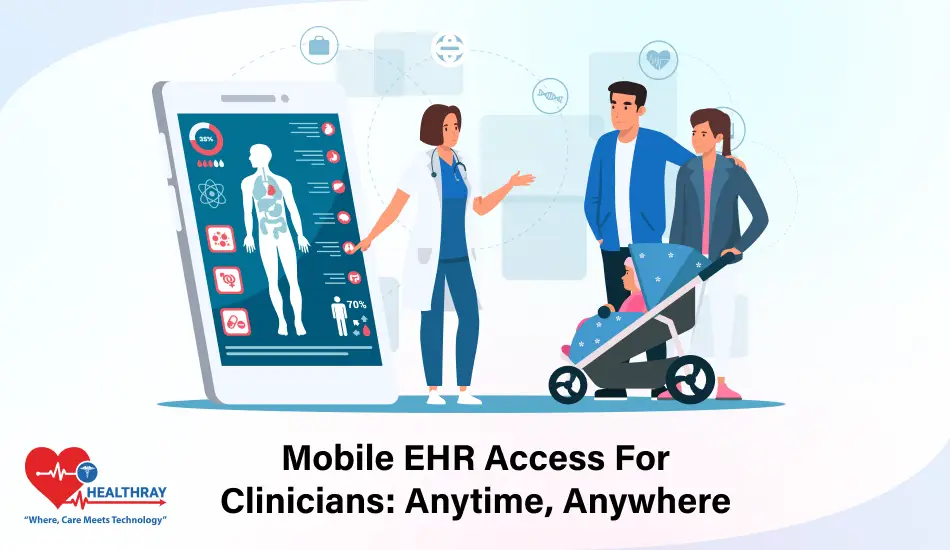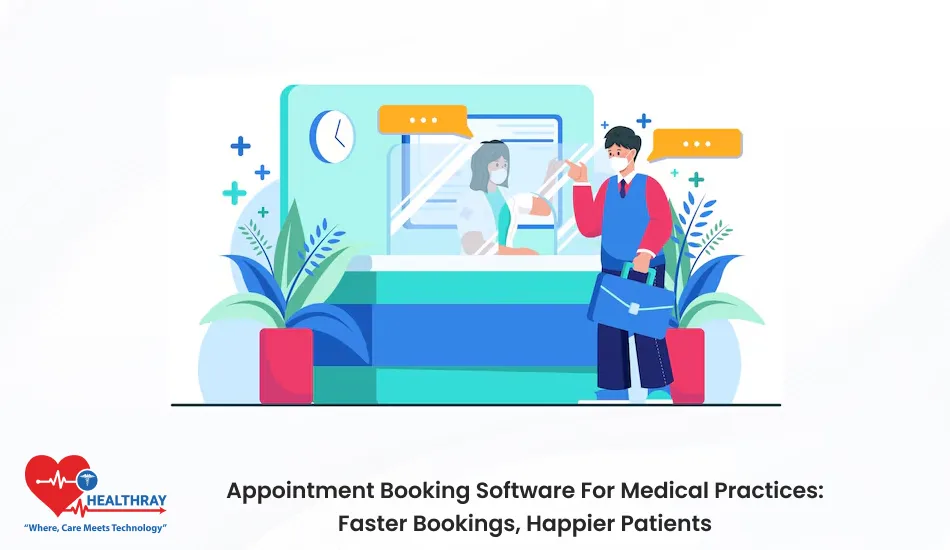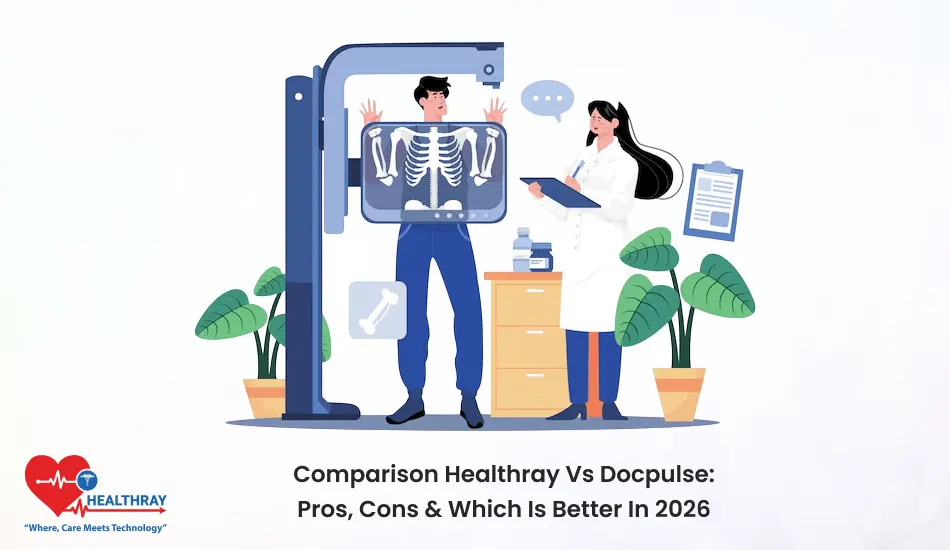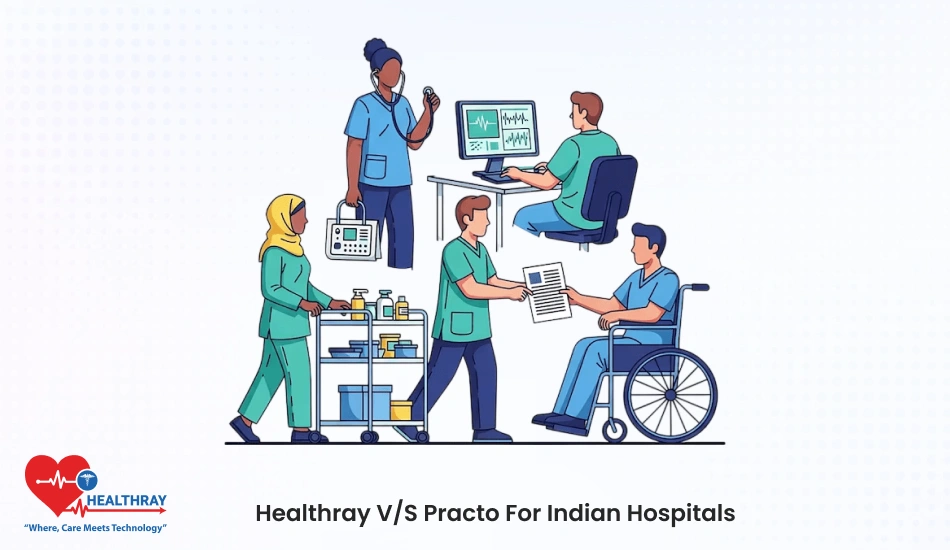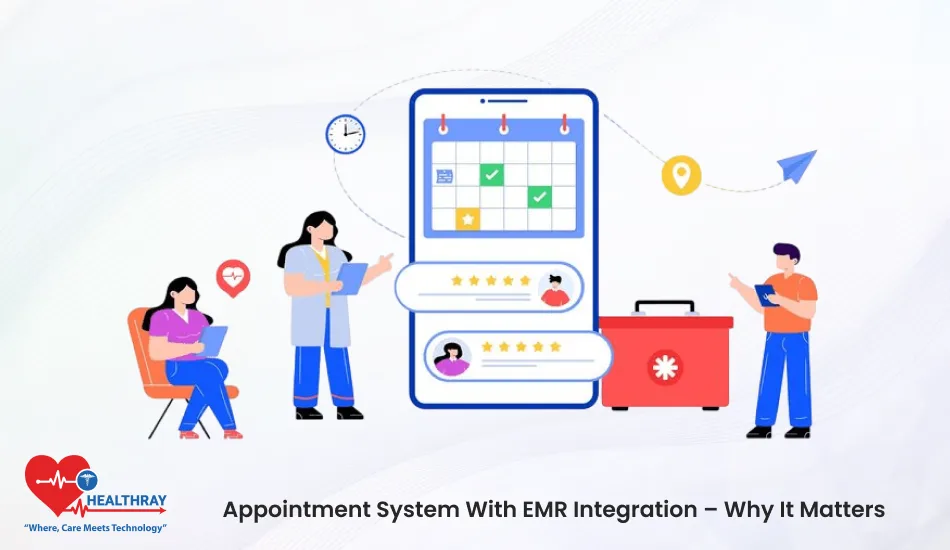Summary
Mobile EHR access for clinicians enables them to provide care anywhere there is wireless access. It gives doctors mobile access to patient information, lab results and medical histories. This mobility translates to greater efficiency, rapid decision-making, and greater coordination within care teams.
With secure messaging, offline access, and instant updates, clinicians deliver smarter, faster, better-connected care. The hospitals that have seen productivity gains, better patient outcomes, and workflow.
Introduction
Picture a doctor running down hospital corridors, phone in one hand, data in another. That’s the beauty of mobile EHR access for clinicians; no cables, no chaos, just control. You can wake patient files with a light tap and a little patience.
Electronic records are the heartbeat of modern medicine. It brings you lab results, alerts you to medication, and also brings you patient histories. It means better care, faster care, and fewer paper chases.
Those old EHR systems clunk and creak under clicks and logins like boulders. Mobility has changed the game, but. Mobile EHR Software zip around them, making data easier, faster, and clearer. Doctors write on rounds, consult while travelling, and update charts on their off shifts.
This post will describe how mobile access to the EHR is changing workflows and clinical decisions.
Here we go!
The Evolution of EHR Systems: From Desktops to Smartphones
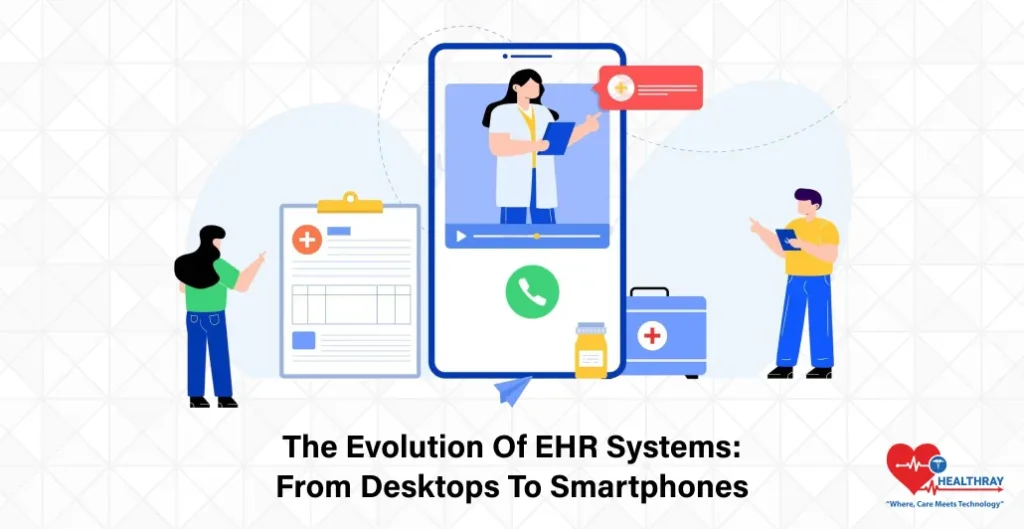
The health care industry used to be in piles of paper, in tiny little rooms. Then came the electronic health record solutions, which digitised the chaos. No more doctors hoarding patient records in stuffy file cabinets. But these early electronic records were desktop-bound, slow, inflexible, and chained to office chairs.
However, the technology behind EHRs has gotten faster, more capacious and more user-friendly over the years. But there was something missing, and that was mobility. Clinics needed movable screens. And they wanted it in real time, not when they got to their desks. That was the tipping point, sort of.
And then came smartphones. Now, doctors can take vitals and enter notes and make decisions from anywhere, on their mobile EHR access. It is clear, therefore, that advanced technology in the case of mobility has actually made a difference with respect to the delivery of care.
Different Types of Mobile EHR Access
Mobile EHR access for clinicians can occur in two ways: via web access or via native applications.
First, native apps are designed to be used specifically on mobile devices. Plus, they are faster, use all the functionalities of the device and are usually offline. Clinicians can thus update records, photograph patients, and send messages in real time.
Conversely, the online version is only available through a browser on a mobile phone. It also allows universal access to patient records and clinical tools with no downloading software. In either case, speed, flexibility, and efficiency are improved. To this end, most leading EHR vendors today provide all so that healthcare teams can communicate, collaborate and keep up to date anywhere, anytime.
Key Features That Make EHR Software Mobile-Friendly
Ease of Use: High-end EHR software provides clean, easy-to-navigate screens that allow for speedy data input.
Instant Updates: Information is updated in real time across devices, as well as across departments in EHR systems.
Offline Mode: Allows access to patient files without the need for an internet connection.
Secure Messaging: EHRs allow secure messaging between members of the care team.
Integrated Tools: Access to lab results, prescriptions and imaging on mobile to make on-the-spot decisions.
The Benefits of Mobile EHR Access for Clinicians
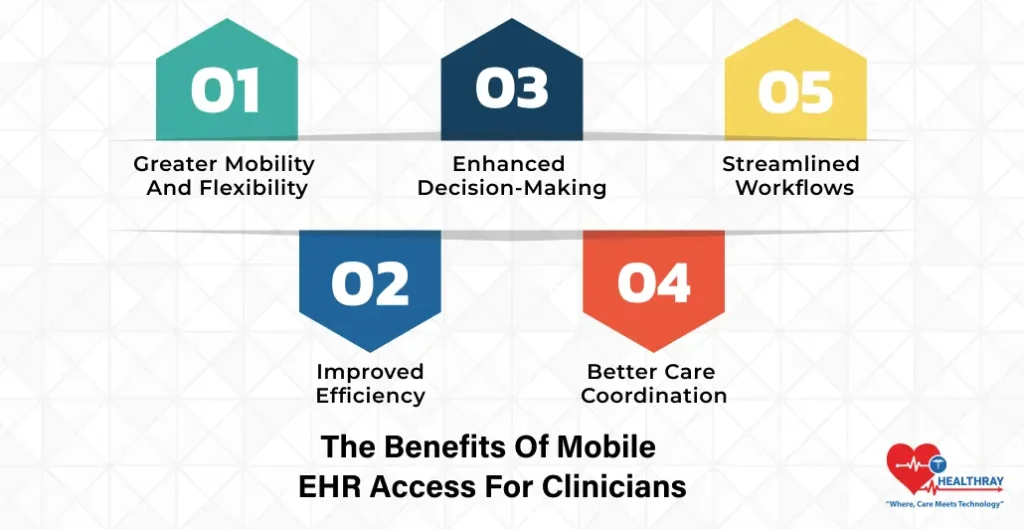
Here are some of the benefits of mobile EHR access for clinicians!
Greater Mobility and Flexibility
Mobile EHRs enable clinicians to access the record from anywhere, allowing the care staff to be mobile. Doctors can take vitals during their rounds. Nurses can update medications even on the flight. All of these features increase responsiveness and reduce lag.
Contemporary versions of EHR software enable real-time updates across departments. Communities can have access to sophisticated electronic health record solutions with offline capabilities even if internet service is not always available. Hospitals with more sophisticated EHR systems have quicker rounds and increased patient satisfaction.
Improved Efficiency
Functionality such as e-prescribing, photo capture, and secure messaging makes for high efficiency. Clinicians can access mobile EHRs, so prescriptions can be sent directly to pharmacies. They can also instantly transmit images of wounds or imaging results.
Nowadays, EHR software companies create user-friendly, time-saving, and error-reducing software. Their electronic health record solution also includes automatic reminders for follow-ups. There is no redundant data entry because nurses’ and doctors’ tools are integrated. This reduces burnout and helps focus more on patients.
Enhanced Decision-Making
Comprehensive data are necessary to make informed decisions. Mobile EHR access for clinicians allows them to have lab results, imaging reports, and patient history in real time. Doctors can compare trends over visits.
Moreover, advanced hospital EHR systems include dashboards that flag vital signs and risk-related alerts. They enable clinicians to monitor chronic conditions and easily identify abnormalities. So, decision-making with eHealth record software is quick, intelligent, and safer. Some of the EHR software companies also integrate predictive analytics to enable early intervention.
Better Care Coordination
Mobile EHR access for clinicians significantly alters care coordination. Teams communicate using secure messaging and dashboards. In larger EHR systems, multiple specialists within a single hospital can log into the same patient file at once.
Electronic health record software ensures that as patients’ data are updated, everyone on the team who needs to know is informed. Physicians, nurses, and lab technicians work well together. Even EHR software companies recognise that careful team coordination reduces errors and builds trust with patients.
Streamlined Workflows
Mobile access to EHRs supports daily hospital routines. Things like reviewing prescriptions, adding to notes, and capturing charges are simpler on the go. In medical billing, EHR is rendered accurate because updates are instantly synced with the billing modules. There are fewer errors seen by administrators and more time spent by clinicians on care.
EHRs also report completed and incomplete tasks and facilitate scheduling and assigning tasks. The major EHR software companies also offer analytics that further simplify workloads. Hospitals that use more sophisticated EHR systems reduce paperwork and increase efficiency.
Mobile EHR Access for Clinicians in Action: Real-World Use Cases
Here are a few examples of how these technologies translate into clinical outcomes and efficiency within these hospitals.
Nationwide Children’s Hospital: Discharge Optimisation
At Nationwide Children’s Hospital in Columbus, Ohio, a Diagnostic Optimisation Tool (DOT) was developed and implemented in 2018, changing the way patient flow was managed. The hospital harnessed mobile EHR access for clinicians to help them incorporate this tool in their daily activities.
The DOT achieved astounding results:
· The discharge before noon rates increased from 16.4% to 19.3%.
· Total median length of stay decreased from 1.75 days to 1.68 days.
· Tool utilisation was 87.2%.
· The prediction of discharge timing was 75.6% accurate.
These numbers illustrate the potential of the EHR software to translate data into action. With mobile EHR discharge prediction in real-time, clinicians can better prioritise their work. Nurses and clinicians are notified and updated on their mobile devices, assuring seamless coordination. This is probably the best instance of advanced hospital EHR systems supporting clinical decision-making and optimising operational efficiency.
Step towards digital era with our healthcare solution
Revamp your hospital facilities and embrace change for better healthcare management. Ease in managing and organizing large medical datasets leads to effective analysis. Seize the opportunity now!
Children’s Hospital of Orange County (CHOC): Predictive Scoring
CHOC implemented a mobile EHR access for clinicians that provided a predictive score in near real-time. By incorporating this predictive model into everyday hospital practices, they reduced readmission rates.
· The percentage of patients readmitted within 7 days declined from 3.8% to 3.3%.
· 30-day rehospitalisation rates decreased from 12.3% to 11.0%.
This success is an example of the capacity of EHR software companies to develop new tools that are more than just documentation. Predictive analytics and scoring systems that alert clinicians to patients at high risk can be embedded in EHR software. With advanced electronic health record solutions, care teams can see all relevant patient risk data and intervene in a timely manner.
Mayo Clinic: Integrated Mobile EHR Tools
An example of mobile EHR access for clinicians to enhance discharge efficiency is found at the Mayo Clinic. By integrating their state-of-the-art hospital EHR system with mobile devices, they can track patient discharge readiness in real time.
Nurses and physicians use mobile devices to access electronic health record software and enter critical information directly into patients’ records. It merges to avoid lag caused by waiting for an update from the desktop. Clinicians at Mayo Clinic also access lab results, update medications and offer care, all from mobile devices.
EHR software companies have moved on to designing user-friendly mobile systems for medium- to large-sized hospitals. Here is what this has meant at the Mayo Clinic:
· Reduced length of stay.
· Less bureaucratic lag.
· Greater interdepartmental coordination.
By linking these predictive capabilities to the EHR software, the hospital facilitates the handoff from inpatient to outpatient care. It also enables EHRs to be more accurate in medical billing because they are updated in real time based on the patient’s current condition.
Cedars-Sinai: Telehealth and Mobile EHR Integration
Cedars-Sinai shows how powerful mobile EHR access for clinicians, paired with telehealth, can be. Through mobile EHR applications, virtual consultations, and other interventions, clinicians continue to track patients’ post-discharge.
Through such an integration, it becomes possible for Cedars-Sinai to:
· Streamlined discharge procedures.
· Continuous monitoring of the health of patients.
· 30% reduction in preventable hospitalisations.
EHR software enables real-time updates that inform care teams about important changes. Nurses can note symptoms, physicians can examine test results from afar, case managers can follow up – all thanks to sophisticated hospital EHR systems.
UK Ambulance Services: Pre-Hospital Patient Data Transfer
In the UK, ambulance services use mobile EHR access to allow clinicians to transmit patient information before patients arrive at hospitals. That helps hospital teams prepare in advance, improving patient outcomes and speeding care.
Paramedics use mobile devices to transmit vital signs, medical history and current condition directly to emergency departments. The data is processed with EHR software and subsequently entered into the hospital’s EHR, allowing clinicians to more effectively triage patients.
Advantages of these include:
· Lowered time to treatment upon arrival.
· Better coordination between the ambulance and the hospital.
· Correct updates in electronic health record software.
More advanced hospital EHR systems are seamlessly integrated with health data, and EHR software companies are continuing to improve EHR mobile capabilities.
Conclusion: The Future Is Mobile, and It’s Already Here
The future of health care is in your pocket. Mobile EHR access for clinicians helps hospitals work faster, smarter, and more efficiently. Moreover, doctors no longer wait for desktops; instead, they act anywhere, instantly. Consequently, EHR software is now driving care decisions, not paperwork. Furthermore, they secure and synchronise all updates, facilitating real-time collaboration.
Ultimately, the message is clear: healthcare must go mobile or it will be left behind. In fact, this shift has begun, and advanced EHRs are already leading the movement toward better care now and in the future.
